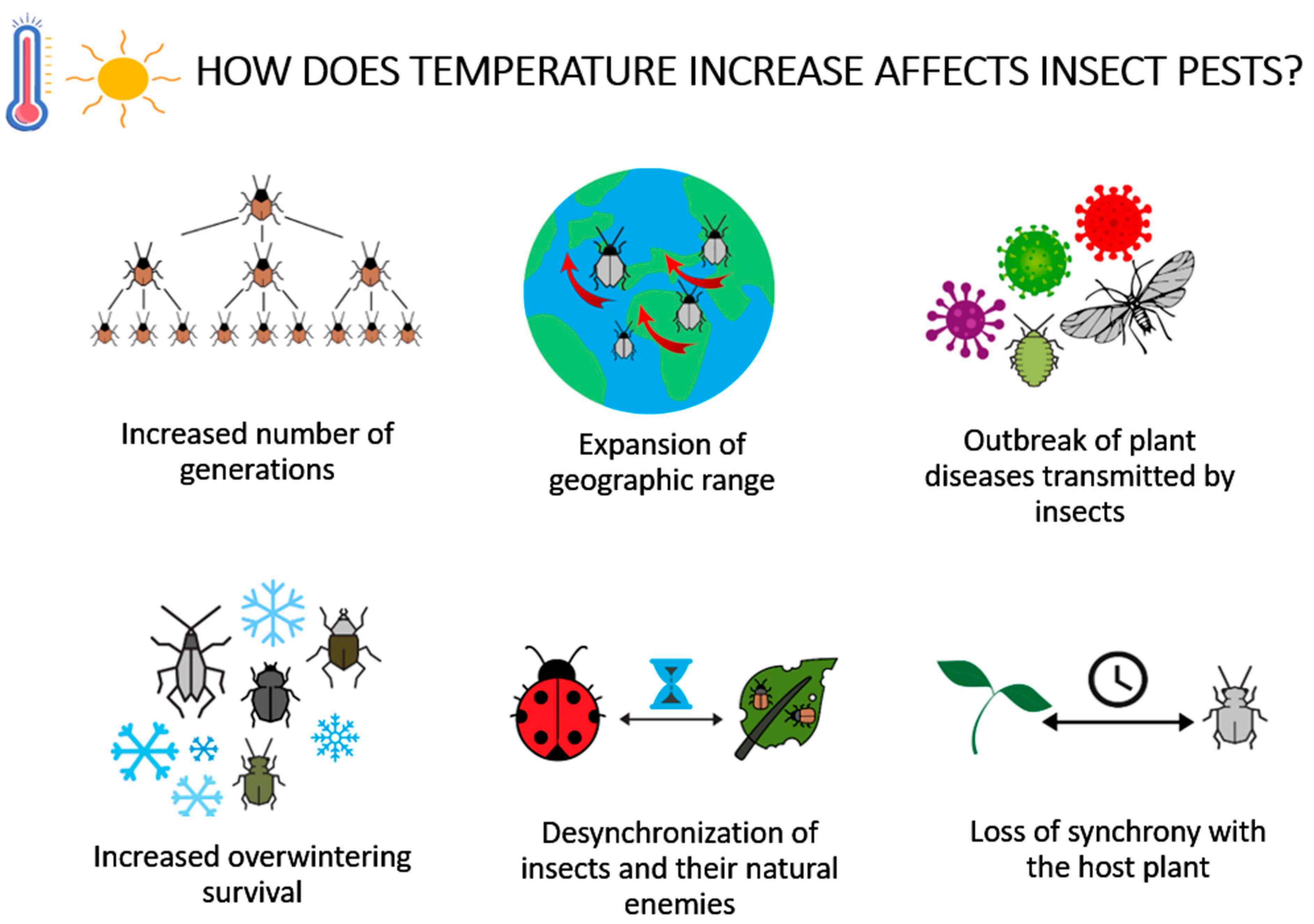Have you ever noticed how some seasons seem to bring more pests into your home or garden? It’s not just your imagination.
The weather plays a crucial role in the life cycle and behavior of pests. As weather patterns shift, you might find yourself dealing with unexpected infestations that can disrupt your daily life and peace of mind. By understanding how these changes affect pest populations, you can better prepare and protect your home and garden from unwanted invaders.
We’ll uncover the surprising connections between the weather and pest activity, and offer practical tips to help you stay one step ahead. Dive in to discover how you can turn this knowledge into your secret weapon against pests.
Impact On Pest Lifecycles
Changing weather patterns can disrupt pest lifecycles, leading to unexpected population surges. Warmer temperatures and altered rainfall create ideal conditions for pests to thrive, affecting agriculture and ecosystems.
Changing weather patterns are more than just a topic for casual conversation. They have tangible impacts on our environment, especially on pest lifecycles. Understanding these changes can help you better manage pest populations around your home or garden. As temperatures rise and weather becomes unpredictable, pests adapt in surprising ways, leading to significant shifts in their lifecycle.
How Temperature Fluctuations Influence Pest Growth
Temperature changes can fast-track pest development. Warmer weather accelerates the growth rate of many pests, allowing them to reproduce faster. This means you might see an increase in pests during warmer months. However, extreme heat can also be detrimental, sometimes reducing their numbers. Have you noticed more mosquitoes in your backyard during a particularly hot summer? That’s a direct result of these temperature changes.
Rainfall Patterns And Pest Habitats
Rainfall can create ideal conditions for certain pests. More rain can lead to an increase in standing water, inviting mosquitoes and other water-borne pests. On the flip side, drought can force pests to migrate to seek out moisture, often into your home. Have you ever wondered why ants suddenly invade your kitchen during a dry spell? They’re searching for water sources.
Impact Of Seasonal Changes On Pest Behavior
Pests respond to seasonal shifts by altering their behavior. Some pests become more active in spring and summer, while others hide away during colder months. For example, you might notice an uptick in spiders as fall approaches, seeking warmth indoors. Understanding these patterns can help you anticipate pest activity and take preventive measures.
Adaptation Strategies Of Pests
Pests are incredibly adaptable. Their ability to adjust their lifecycles in response to changing weather ensures their survival. This adaptability can make them harder to control. Have you ever tried getting rid of cockroaches, only to find them more resilient than ever? Their ability to adapt to new environments is a key reason why.
What Can You Do?
Monitoring weather patterns can give you a head start in pest control. Regularly check forecasts to predict pest activity and plan your pest management strategies accordingly. Consider this: If you know a warm spell is coming, prepare by securing your home against potential infestations. What steps will you take next time the weather changes?
By understanding the impact of changing weather on pest lifecycles, you can be proactive in managing them. Each weather shift brings new challenges and opportunities for pest control, making it essential to stay informed and prepared.

Shift In Geographic Distribution
Changing weather patterns shift pest populations to new areas. Warmer temperatures can move pests to cooler regions. This affects agriculture and health by increasing pest spread.
Changing weather patterns are causing significant shifts in the geographic distribution of pests. Warmer temperatures and altered precipitation patterns mean pests are now appearing in places they were previously unheard of. This shift is not only impacting ecosystems but also affecting agriculture and human health.
Understanding The Migration
As temperatures rise, many pests are moving to cooler areas. You might find pests in your garden that previously only thrived in warmer climates. This is a direct response to the increasing global temperatures.
Impact On Ecosystems
Pests invading new areas can disrupt local ecosystems. Native species may not have defenses against these new invaders. This can lead to an imbalance, affecting biodiversity and local flora and fauna.
Agricultural Implications
Farmers are facing new challenges with pest management. Crops that were once safe from certain pests are now at risk. This requires adapting pest control strategies, which can increase costs and affect yields.
Personal Experiences
Last summer, you might have noticed an uptick in mosquitoes or other insects in your area. This was probably due to unusual weather patterns. It’s a small glimpse into how rapidly our environment is changing.
Preparing For The Future
So, what can you do? Stay informed about the pests common to your region and how climate change might be affecting them. Consider using native plants in your garden, as they are more resilient to local pests.
How have shifting weather patterns affected the pests in your area? Are you seeing new challenges in your garden or community? Understanding these changes is key to adapting and protecting our environments.
Challenges For Pest Management
As our planet experiences shifting weather patterns, pest populations are adapting in ways that present new challenges for pest management. Warmer temperatures and altered rainfall can lead to increased reproduction rates and expanded habitats for pests. This means that traditional pest control methods may no longer be as effective. For instance, I once noticed that despite using the same pest control strategies in my garden year after year, I was suddenly facing an influx of new pests. It made me realize that understanding these changes is crucial for effective pest management.
Understanding Pest Behavior Changes
Weather changes influence pest behavior significantly. Warmer climates can extend breeding seasons, causing pests to multiply faster. This can lead to year-round infestations instead of just seasonal ones. Are you noticing pests in your home even in winter? This could be the reason.
Increased Resistance To Traditional Methods
Pests are becoming more resistant to conventional pesticides. As their environments change, they adapt, developing resistance that renders many chemical solutions less effective. Have you ever wondered why that trusty spray isn’t working anymore? It might be time to consider alternative strategies.
Emergence Of New Pest Species
Changing weather can introduce new pest species to areas previously unaffected. These newcomers can outcompete local species, creating unforeseen challenges for pest management. Imagine waking up to find an unfamiliar pest in your garden. It’s a scenario becoming more common as weather patterns shift.
Adapting Pest Management Strategies
To tackle these challenges, it’s crucial to adapt your pest management strategies. Integrated Pest Management (IPM) is gaining traction as a more sustainable approach. It combines biological, cultural, and mechanical practices to manage pest populations. Have you considered using natural predators or crop rotation in your garden?
Effective pest management requires staying informed about how weather patterns affect pest populations. By understanding these challenges and adapting your strategies, you can better protect your home and garden. What steps will you take to manage pests in this changing climate?
Conclusion
Changing weather patterns significantly impact pest populations. Warmer temperatures allow pests to thrive longer. Increased rainfall can lead to more breeding sites. Droughts may drive pests indoors, seeking moisture. These changes affect agriculture, health, and ecosystems. Farmers face new challenges in pest management.
Urban areas see shifts in pest behavior. Understanding these patterns helps in planning effective control strategies. Everyone plays a part in addressing this issue. Awareness and action can mitigate negative impacts. Stay informed and adapt to changing conditions. This helps protect our environment and health from pest-related problems.



